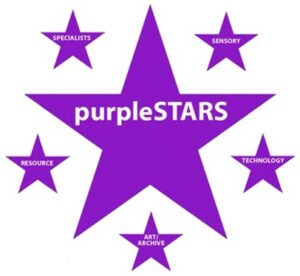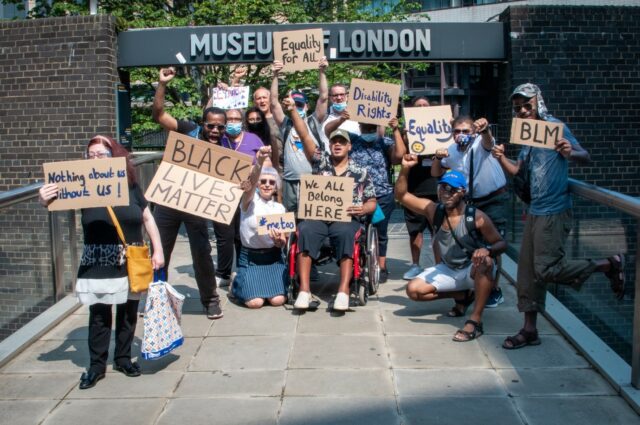To celebrate #purplelightup for International Day of Persons with Disabilities, Kate Allen writes about purpleSTARS, a team of artists and technologists with and without learning difficulties and disabilities (LDD). They work with museums and heritage sites to make displays appeal to all of our senses.
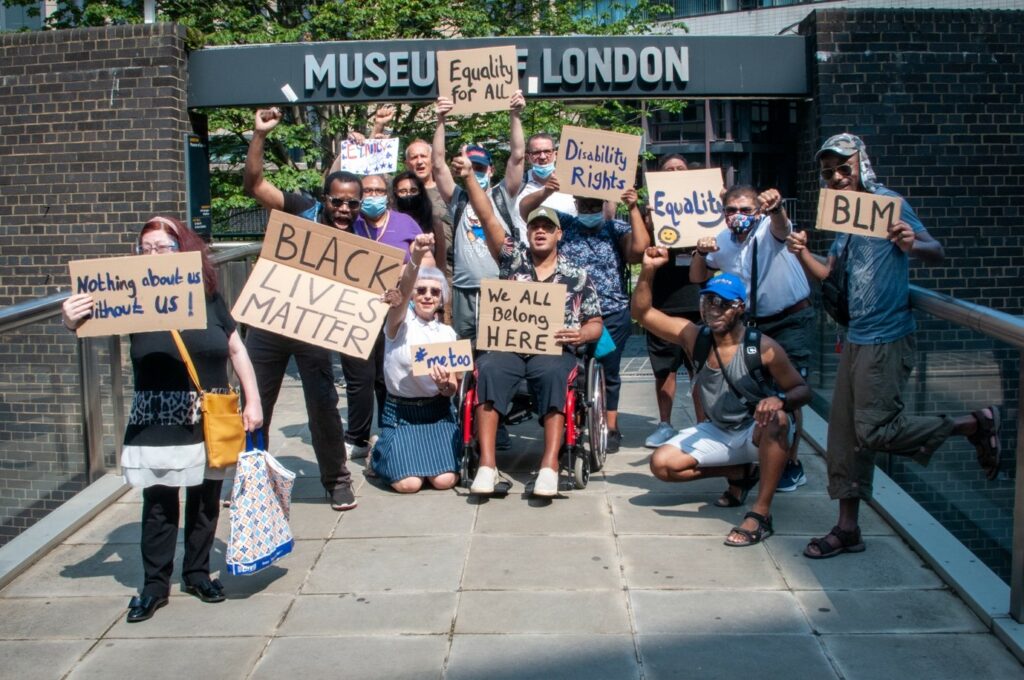
Our aim is to make museums more interesting and inclusive for all types of visitors.
We think that being able to touch and feel things in museums makes a visit more interesting. We think we should be able to even smell and taste things in museums, as well as seeing and hearing them. That is our idea of a really interesting museum!
The purpleSTARS name features the colour purple because it has become associated with people with disabilities, and STARS stands for Sensory, Technology and Art Resource Specialists.
purpleSTARS was founded in 2018 as a follow-on Impact and Engagement enterprise, developed from the AHRC funded Sensory Objects Research project 2012–15, led by Dr Kate Allen from Reading School of Art at the University of Reading with Professor Andy Minnion, Director of RIX Research and Media at the University of East London.
We work in collaboration with people with LDD using sensory art and digital media to creatively disrupt and re-interpret heritage sites, museum collections and ideas of ownership. Our interactive sensory experiences encourage deeper exploration, understanding, storytelling and appreciation of objects and collections.
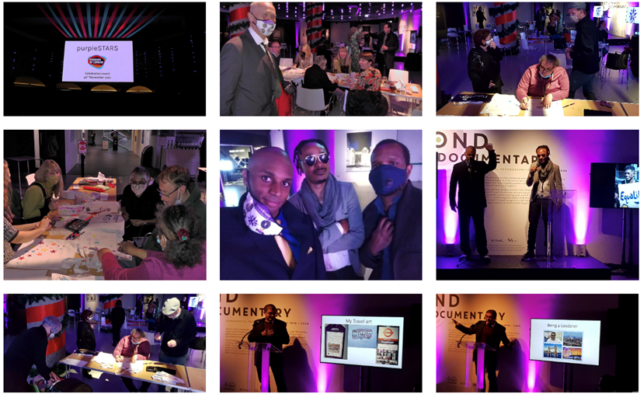
The purpleSTARS approach to inclusive design is transformative because it applies the self-advocacy maxim of “nothing about us without us” by actively engaging and valuing people with LDD as experts at the heart of the processes that shape our cultural institutions. As such our work disrupts established understanding of inclusive design as a set of adjustments, proposing in its place a model of inclusivity gained through practice, that interprets the often-cited ‘public ownership’ of our museums in a challenging way.
We promote inclusive public culture by actively engaging disabled people as researchers, curators and creative producers, with a method that enshrines the definition of inclusive research proposed by Jan Walmsley and Kelly Johnson:
Inclusive Research is research in which people with learning disabilities are active participants, not only as subjects but also as initiators, doers, writers and disseminators of research. (Inclusive Research with People with Learning Disabilities, 2003)
Our latest project, funded by the University of Reading through the Research England Participatory Fund, explores how smell can be included in experiences of oral history collections. We hope our ideas feed into the new Museum of London (MoL) at their new site in West Smithfield in 2024.
The project developed as a result of purpleSTARS observing visitors to the ‘London is the Place for Me’ exhibition at MoL. purpleSTARS member Ros noticed the smells we chose to embed in the display were not always accessible. Samantha said that the scent added to objects quickly disappeared into the space. We explored how smell could accompany an online experience such as our 360 version of the display.
We enjoyed hearing the oral history reminiscences of Ms Shaw’s cinema date with her boyfriend “who bought her a big bar of milk chocolate”. Her story resonated with all purpleSTARS members: Lee recalled a school trip to the cinema in Leicester Square and being give free chocolate, while Ros had a memory of eating a big tub of popcorn.
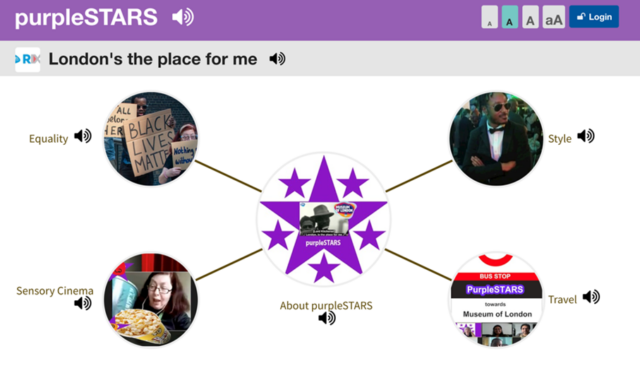
Theme Park and Museum Scenting Specialist, Liam Findley from Aroma Prime, helped us develop a bespoke smell blotter. During six smell workshops we chose a library of scents and started to develop a series of prototype scent cards that connect the oral history recordings to smell.
We are continuing to build on this research, developing an intimate sound/smell experience that could be used while visiting the museum or sent to out to accompany a virtual experience at home.
purpleSTARS are busy presenting, running training workshops, developing new research collaborations for and with anyone interested in our ideas for sensory art, technology, and our mission for inclusion!
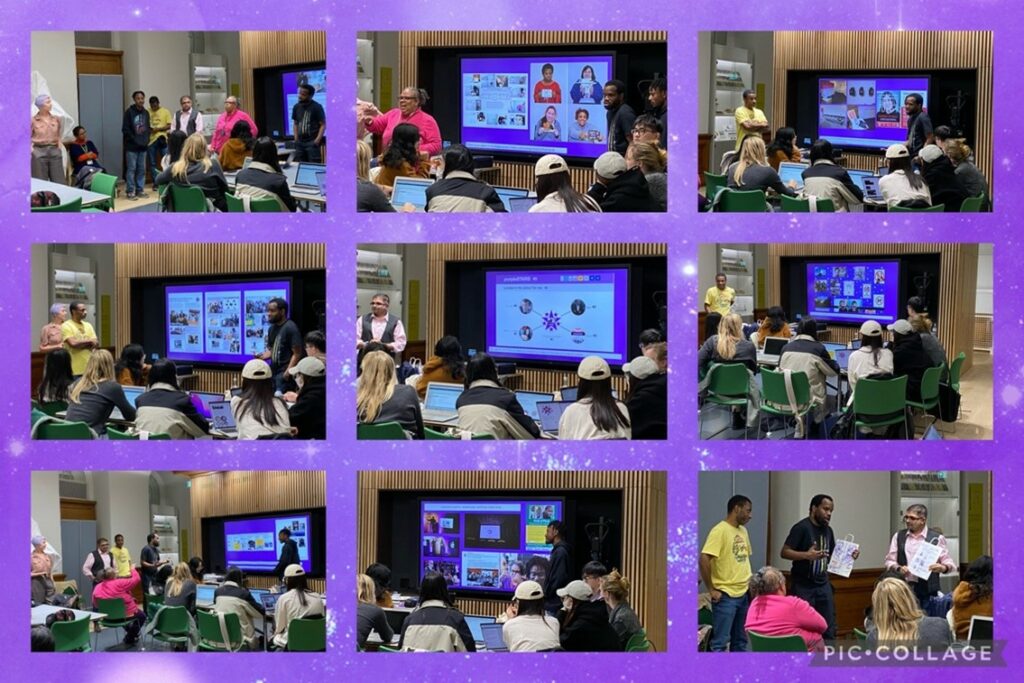
Find out more
- purplestars.org.uk
- Multi-sensory display of the MoL’s Oral History Archive created by purpleSTARS during Lockdown 2021. Part of Listening to London supported by The Esmé Fairbairn Collections Fund.
- rixresearchandmedia.org/together/purplestars
- Download Inclusive Digital Interactives: Best Practices and Research by Access Smithsonian, MuseWeb and Institute for Human Centered Design
Dr Kate Allen is an Associate Professor in Art at the University of Reading.
purpleSTARS members pictured in first image above: Ros Weinberg, Paul Christian, Samantha Walker, Kate Allen, Kanchan Kerai, Andy Minnion, Michael Tapps, Justin Grimes, Tim Elson, Judith Appiah, Ryan Burns, Ajay Choksi, Lee Phillips, and Rufaro Asuquo.
